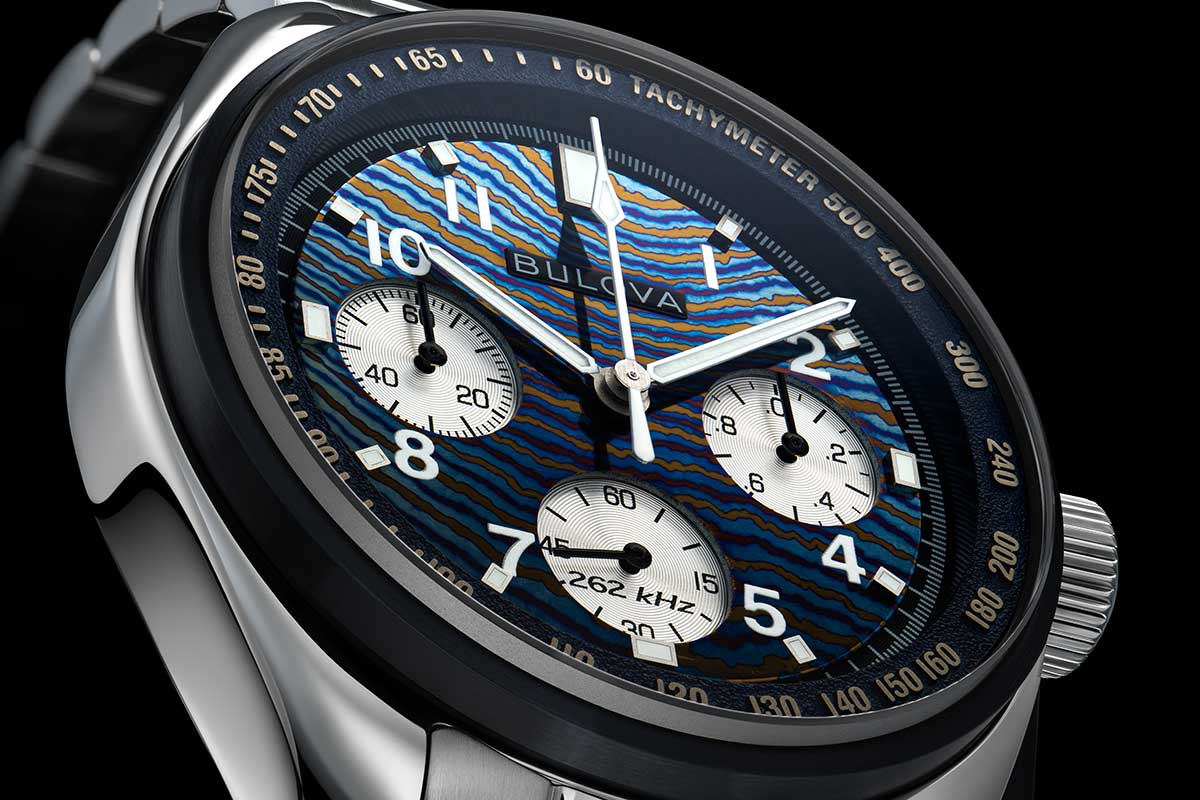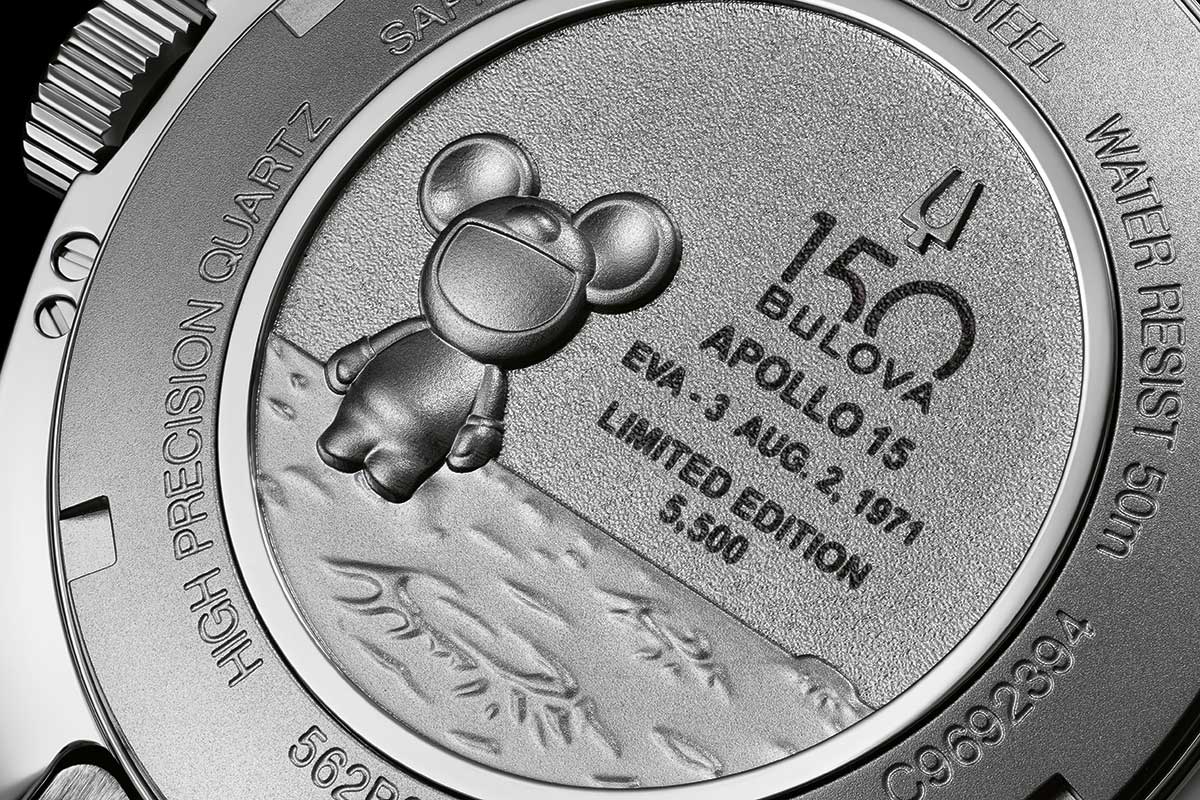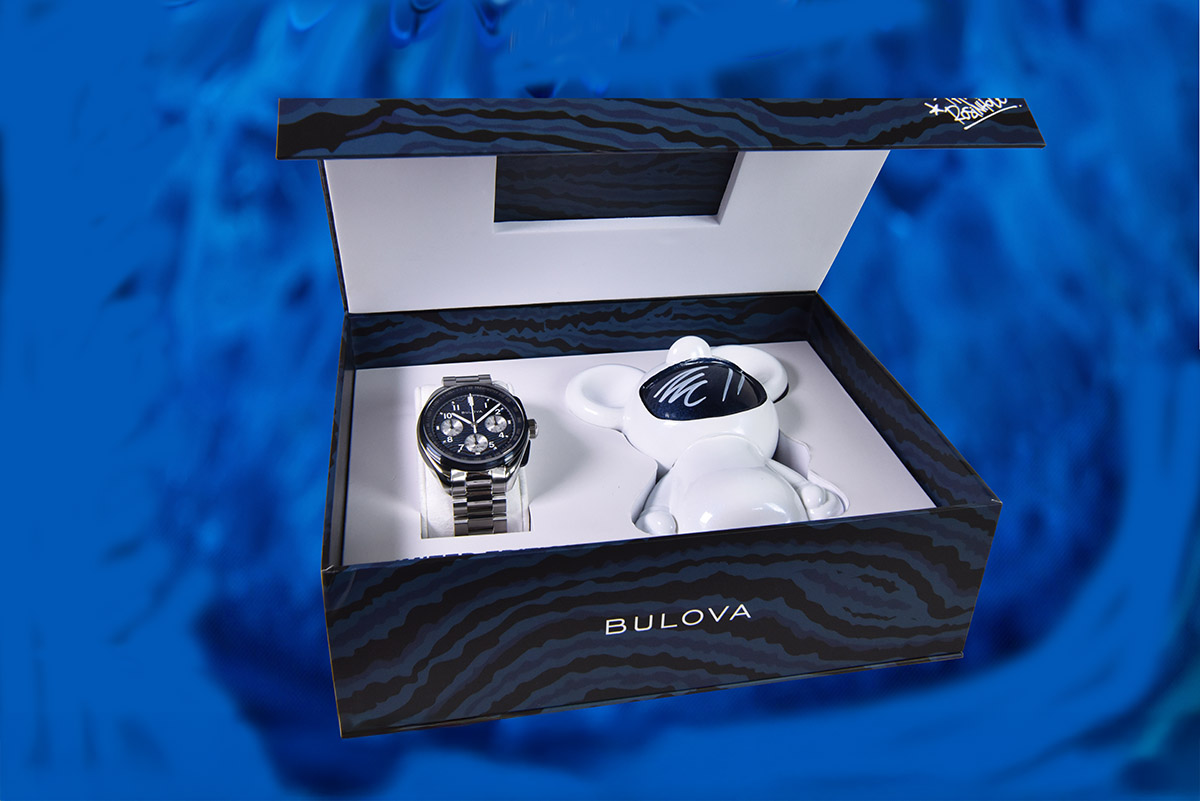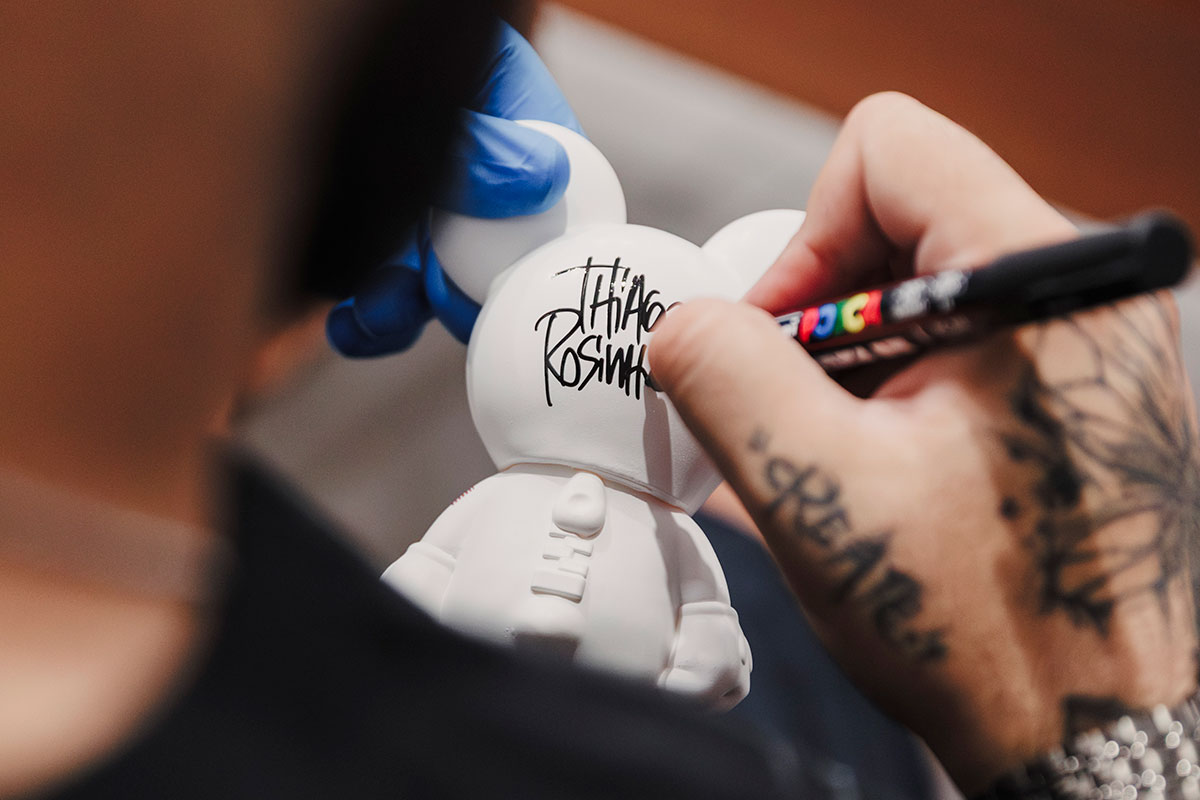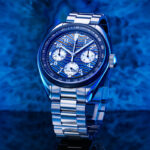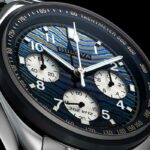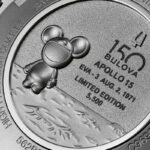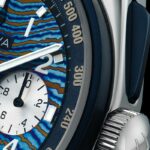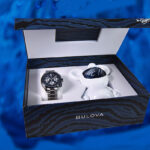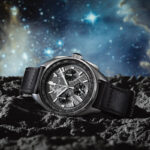This post is also available in: Italian
I have always thought that the Bulova Lunar Pilot is one of the most serious-looking watches around. Its functional aesthetic, unchanged since the days of NASA’s lunar missions in the 1970s, is matched by the reliable, robust, precise high-frequency quartz movement inside. In short, it is the prototype ‘tool watch’, retaining the charm of having landed on the Moon on the wrists of astronauts over 50 years ago.
However, in recent years, the Lunar Pilot has begun experimenting with different colours and materials. We have seen the dial change from black to red or ‘blue panda’, and it has been covered in meteorite. The case has grown from the original 43.3 mm to a more masculine 45 mm and back again. Today, the watch is finally taking itself less seriously.
Budii, the new friend of the Lunar Pilot
How? Thanks to one of those operations that they call a ‘collab’ in watchmaking, an Americanism which I find obnoxious but which is unfortunately also popular. (Obviously, this stands for ‘collaboration’. Is it too much effort to say ‘collaboration’? Idiocy reigns supreme, editor’s note). In this case, it’s with the Brazilian artist Thiago Rosinhole, who is well-known among Pop Art enthusiasts for his famous Budii character. Budii is a mouse-like character originally made from a combination of resin and fibreglass, hand-painted with a mixture of acrylic spray paint and professional markers. For this project, the artist has transformed Budii into an astronaut and associated him with the Bulova Lunar Pilot, providing his own personal interpretation through his work on the dial.
Thiago Rosinhole’s involvement in this project was no coincidence. As well as lending his work to international brands to customise their products, the São Paulo native is one of the Bulovers. In short, he is a fan of the brand and was eager to contribute his art to such a symbol as the Lunar Pilot.
I won’t recount the history of the Lunar Pilot here, as you can find a comprehensive summary in this well-documented article. Of particular interest is the personal artistic touch that Thiago Rosinhole has brought to the watch and the unique, almost alchemical technique he has used to create the one-of-a-kind dial.
Timascus: a mysterious name
In every sense of the word, as the technique adopted by the artist and the material used ensure that each dial is unique. The material is called Timascus or Timasco. Although the name is reminiscent of Damascus steel – a generic term for steel alloys with welds that form different patterns – Timascus is a registered trademark. It is essentially a titanium version of Damascus steel, with different titanium alloys mixed together to form an ornamental pattern.
The term ‘Timascus’ is a combination of ‘titanium’ and ‘Damascus’, and it is not entirely new to watchmaking (some lesser-known brands have used it for the case). In fact, it has been around for at least four or five years, although it is not widely used. This innovative material was initially created by three American metalworkers: Tom Ferry, Bill Cottrell and Chuck Bybee.
Like Damascus steel, Timascus consists of two or more alloys that are rolled and welded together to create decorative patterns. Timascus uses either commercially pure titanium or Grade 5 titanium. While patterns in Damascus steel are typically brought out using acid etching, Timascus patterns are more commonly revealed using heat or anodisation. Heat colouring appears to produce greater colour contrast in the official Timascus alloy blend than anodising does. Polished finishes produce the brightest colours, while satin finishes can create a more visually striking effect.
The new livery of the Lunar Pilot
Thiago Rosinhole’s craftsmanship with the Timascus gives the dial a polychrome grain ranging from azure to blue and from burgundy to lilac. The result is an irregular, non-geometric pattern that creates an effect reminiscent of marble or damask. This is why no two dials are alike and each Bulova Lunar Pilot is unique.
The artist bends, melts and forges the titanium alloy using heat and pressure. This process creates contrasting designs, lines and colours fused into fascinating shapes, thanks to the alloy’s various components having different levels of oxidation resistance. The result is a dial characterised by futuristic effects and colour combinations.
For a historic brand like Bulova, this is certainly a bold choice, especially since it has been applied to one of its most famous, traditionally styled collections. In short, this is a Lunar Pilot for true Bulova fans who are willing to embrace a departure from tradition for the sake of art. Thiago Rosinhole has signed not only the dial, but also the historic case back.
Further details can be found in the captions. Finally, it is at the upper end of Bulova’s price scale: €1,550. This number commemorates the 150th anniversary that the brand will celebrate in 2025, albeit quietly, and the price is justified by the fact that it is a limited edition: only 5,500 pieces will be produced worldwide, with 300 reserved for Italy.
What can I say? Bulova fans and art lovers, get ready!

